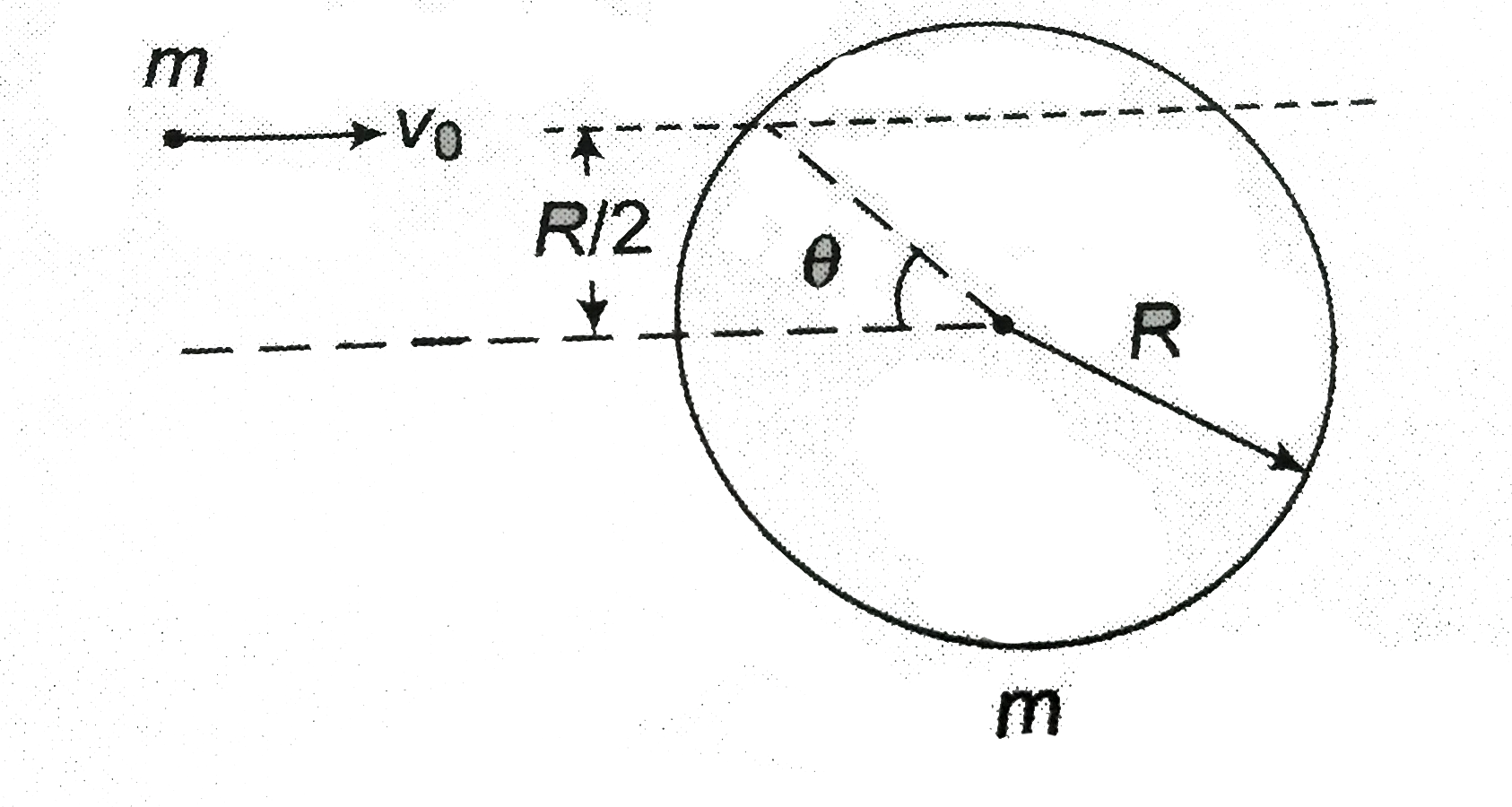A particle of mass m moving on a smooth surface with velocity 10m/s strikes another particle of mass 2m moving with 5m/s in the same direction . If the collision is elastic and head - on , find velocities of particles after the collision.
To solve the problem of finding the velocities of two particles after an elastic collision, we can follow these steps:
Step 1: Define the initial conditions
Let:
- Mass of the first particle, m1=m
- Initial velocity of the first particle, u1=10m/s
- Mass of the second particle, m2=2m
- Initial velocity of the second particle, u2=5m/s
Step 2: Apply the conservation of momentum
In an elastic collision, the total momentum before the collision is equal to the total momentum after the collision.
The initial momentum Pinitial is given by:
Pinitial=m1u1+m2u2=m⋅10+2m⋅5=10m+10m=20m
Let v1 be the final velocity of the first particle and v2 be the final velocity of the second particle. The final momentum Pfinal is:
Pfinal=m1v1+m2v2=m⋅v1+2m⋅v2
Setting the initial momentum equal to the final momentum:
20m=mv1+2mv2
Dividing through by m (assuming m≠0):
20=v1+2v2(Equation 1)
Step 3: Apply the conservation of kinetic energy
In an elastic collision, the total kinetic energy before the collision is equal to the total kinetic energy after the collision.
The initial kinetic energy KEinitial is given by:
KEinitial=12m1u21+12m2u22=12m(102)+12(2m)(52)=12m(100)+12(2m)(25)
=50m+25m=75m
The final kinetic energy KEfinal is:
KEfinal=12m1v21+12m2v22=12mv21+12(2m)v22=12mv21+mv22
Setting the initial kinetic energy equal to the final kinetic energy:
75m=12mv21+mv22
Dividing through by m:
75=12v21+v22(Equation 2)
Step 4: Solve the equations
From Equation 1, we have:
v1=20−2v2
Substituting v1 into Equation 2:
75=12(20−2v2)2+v22
Expanding:
75=12(400−80v2+4v22)+v22
75=200−40v2+2v22+v22
75=200−40v2+3v22
0=3v22−40v2+125
Step 5: Use the quadratic formula to find v2
Using the quadratic formula v2=−b±√b2−4ac2a:
Here, a=3,b=−40,c=125:
v2=40±√(−40)2−4⋅3⋅1252⋅3
=40±√1600−15006
=40±√1006
=40±106
Calculating the two possible values:
1. v2=506=253m/s
2. v2=306=5m/s
Step 6: Find v1
Using v2=253:
v1=20−2⋅253=20−503=603−503=103m/s
Thus, the final velocities after the collision are:
- v1=103m/s
- v2=253m/s
Let:
- Mass of the first particle, m1=m
- Initial velocity of the first particle, u1=10m/s
- Mass of the second particle, m2=2m
- Initial velocity of the second particle, u2=5m/s
In an elastic collision, the total momentum before the collision is equal to the total momentum after the collision.
Pinitial=m1u1+m2u2=m⋅10+2m⋅5=10m+10m=20m
Pfinal=m1v1+m2v2=m⋅v1+2m⋅v2
20m=mv1+2mv2
20=v1+2v2(Equation 1)
In an elastic collision, the total kinetic energy before the collision is equal to the total kinetic energy after the collision.
KEinitial=12m1u21+12m2u22=12m(102)+12(2m)(52)=12m(100)+12(2m)(25)
=50m+25m=75m
KEfinal=12m1v21+12m2v22=12mv21+12(2m)v22=12mv21+mv22
75m=12mv21+mv22
75=12v21+v22(Equation 2)
From Equation 1, we have:
v1=20−2v2
75=12(20−2v2)2+v22
75=12(400−80v2+4v22)+v22
75=200−40v2+2v22+v22
75=200−40v2+3v22
0=3v22−40v2+125
Using the quadratic formula v2=−b±√b2−4ac2a:
Here, a=3,b=−40,c=125:
v2=40±√(−40)2−4⋅3⋅1252⋅3
=40±√1600−15006
=40±√1006
=40±106
1. v2=506=253m/s
2. v2=306=5m/s
Using v2=253:
v1=20−2⋅253=20−503=603−503=103m/s
- v1=103m/s
- v2=253m/s
Topper's Solved these Questions
Similar Questions
A particle of mass m moving with velocity 2v collides with another particle of mass 3m moving with velocity v in the same direction.If it is perfect inelastic collision,the loss of kinetic energy of the system is
View SolutionA particle of mass m1 moving on a smooth surface with some velocity strikes another particle of mass m2 at rest. The head - on elastic collision takes place. After the collision , particles move with equal speed in opposite direction . Determine the mass ratio.
View Solution
Knowledge Check
A ball of mass 10 kg is moving with a velocity of 10 m / s . It strikes another ball of mass 5 kg which is moving in the same direction with a velocity of 4 m / s . If the collision is elastic, their velocities after the collision will be, respectively
A6m/s, 12m/sB12m/s, 6m/sC12 m/s, 10 m/sD12m/s, 25m/sA particle of mass m moving with velocity v strikes a stationary particle of mass 2m and sticks to it. The speed of the system will be.
Av//2B2 vCv//3D3 vA ball of mass M moving with a velocity v collides perfectly inelastically with another ball of same mass but moving with a velocity v in the opposite direction. After collision
Aboth the balls come to restBthe velocities are exchanged between the two ballsCboth of them move at right angles to the original line of motionDone ball comes to rest and another ball travels back with velocity 2v
A particle of mass m moving with velocity v0 collides with sphere of same mass at rest , as shown. If the surface of contact is smooth and the collision is elastic, find the velocities of particle and sphere after the collision.

View SolutionA particle of mass 2m moving with velocity v strikes a stationary particle of mass 3m and sticks to it. The speed of the system will be
View SolutionA body of mass 2kg moving with a velocity 3m/s collides with a body of mass 1kg moving with a velocity of 4m/s in opposite direction. If the collision is head on and completely inelastic, then
View SolutionA particle of mass 2m moving with velocity v strikes a stationary particle of mass 3m and sticks to it . The speed of the system will be
View SolutionA particle of mass m moving in the x direction with speed 2v is hit by particle of mass 2m moving in the y direction with speed v. If the collision is perfectly inelastic, the percentage loss in the energy during the collision is close to:
View Solution
